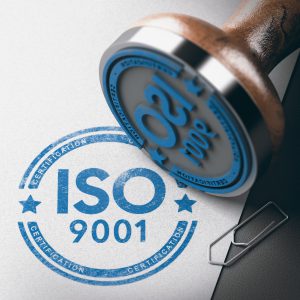You may have come across organisations that are certified to ISO9001; perhaps you’ve seen the ISO9001 certification logo on a lorry, work van, or on a website. An ISO 9001 certification can provide all kinds of benefits for both the organisation and its customers.
If you’re considering putting a Quality Management System (QMS) in place at your organisation, but aren’t sure if you’re ready to commit to the project, it may help to have a look at our blog which explains how the process works.
In the meantime, I’m sure it would be helpful to get an idea of the ISO 9001requirements, and the key documentation and processes you’ll be working on. Luckily, we’ve put together a quick guide:
What Does ISO 9001 look like?
There are 10 clauses, most of which overlap with other standards in the Annex SL structure (a structure of clauses designed to help integrate standards together). The key requirements to be aware of are:
- A Policy (to state what you are doing and why),
- The Control of Processes (ensuring they are at their best and everyone is doing things the same way),
- Identifying Interested Parties (people and organisations who may affect or be affected by your organisation and QMS),
- Identification and Planning to Address Risks and Opportunities (to help prepare you for potential risks that may affect the organisation and opportunities that might arise),
- Objectives (or targets, designed to ensure the organisation keeps improving in line with its ISO certifications),
- Planning of Changes (ensure that changes to the QMS and to the organisation are properly planned, documented and implemented)
- Support (identifying and providing the support functions required such as adequately trained people, resources, buildings, equipment, tools, technology and work environment. Also, the documented information of the organisation must be properly controlled.),
- Operational Control (identifying the way your organisation does what it does, and ensure that controls are in place for all functions and aspects),
- Design and Development (ensuring your design and development processes are properly controlled and documented)
- Control of External Providers (identifying anyone that provides products or services to your organisation, and ensuring they and the products / services they provide are adequately checked, monitored and controlled)
- Production and Service Provision (the way that your organisation creates or provides products or services must be properly controlled, including identification, traceability throughout the process, looking after property that isn’t yours, how you give your products / services to your customers, what you do after you have given the products / services to customers, and what you do if something doesn’t do what it should),
- Performance Evaluation (monitoring, evaluating and analysing the performance of your process, operations and all other activities that could affect the customer. This includes ensuring customer satisfaction and gathering customer feedback)
- Non-Conformance Management (identifying when something goes wrong, what caused it, and ensuring it is sorted out and re-occurrence is prevented).
If these requirements sound like the kind of project your organisation could benefit from, but you aren’t sure quite where to start, a quality consultant can assist you.
Get in touch with us to discuss how our qualified and experienced ISO 9001 consultants can provide guidance and support to see you through your ISO journey comfortably.


